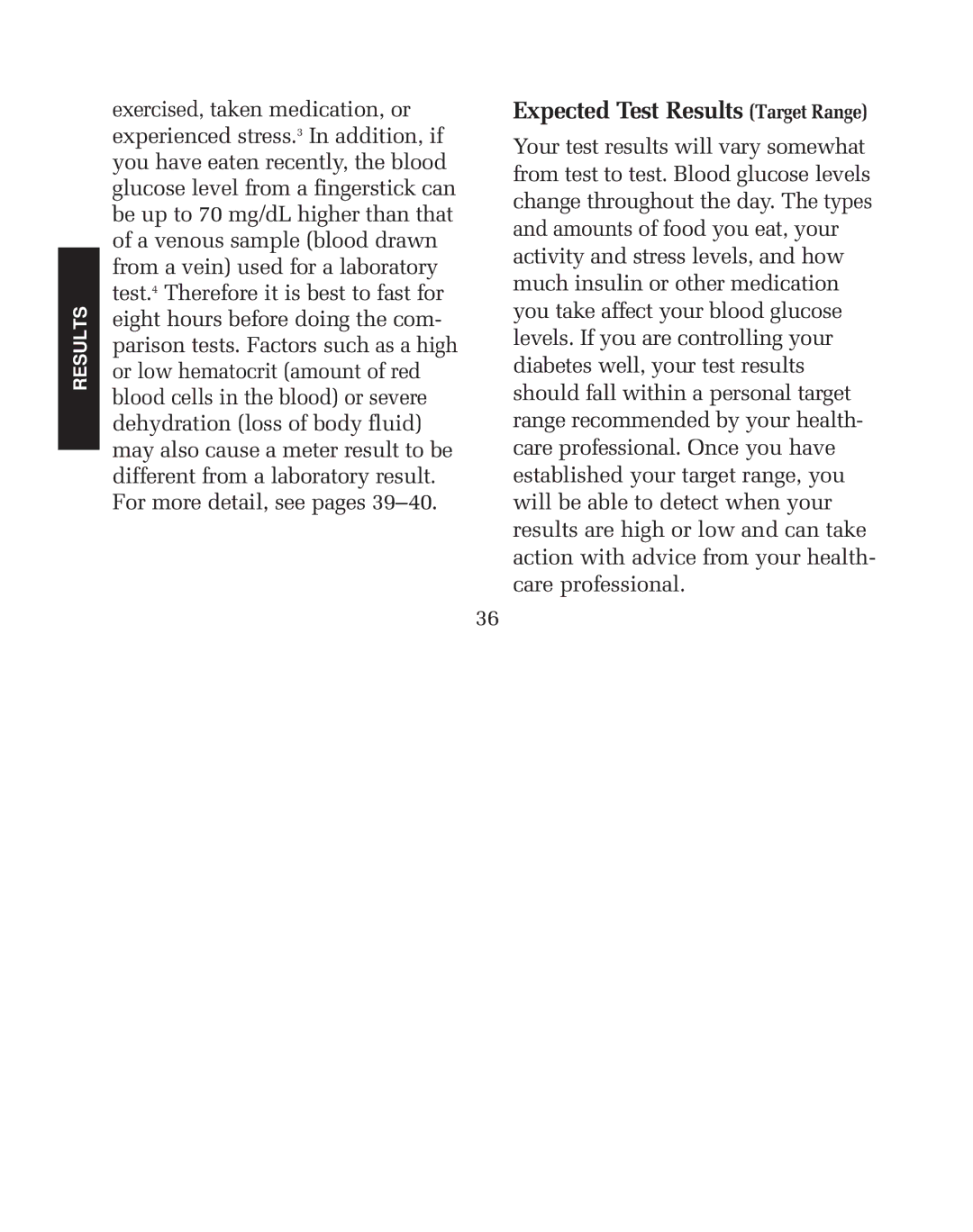
RESULTS
exercised, taken medication, or experienced stress.3 In addition, if you have eaten recently, the blood glucose level from a fingerstick can be up to 70 mg/dL higher than that of a venous sample (blood drawn from a vein) used for a laboratory test.4 Therefore it is best to fast for eight hours before doing the com- parison tests. Factors such as a high or low hematocrit (amount of red blood cells in the blood) or severe dehydration (loss of body fluid) may also cause a meter result to be different from a laboratory result. For more detail, see pages
Expected Test Results (Target Range)
Your test results will vary somewhat from test to test. Blood glucose levels change throughout the day. The types and amounts of food you eat, your activity and stress levels, and how much insulin or other medication you take affect your blood glucose levels. If you are controlling your diabetes well, your test results should fall within a personal target range recommended by your health- care professional. Once you have established your target range, you will be able to detect when your results are high or low and can take action with advice from your health- care professional.
36
